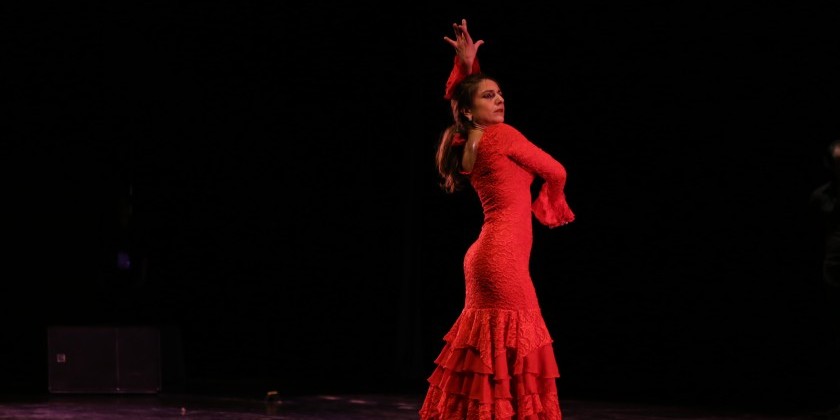IMPRESSIONS OF: Stefanie Batten Bland's "PATIENT(CE)- A PHYSICAL REQUIEM"

at the Harlem Stage Gatehouse
Stefanie Batten Bland/Company SBB
PATIENT(CE)- A PHYSICAL REQUIEM
Thursday- Saturday October 22-24th at The Harlem Stage Gatehouse
Choreography/Conception/Direction- Stefanie Batten Bland / Contributing Dance Artists: Brittany Engel-Adams, Nicolette Alberti, Will Brown, Winston Brown,Yeman Brown, Kevin Fay, Mistral Hay and Jennifer Rose / Costumes: Deborah Ferguson / Lighting and Technical Direction: Alaric Hahn / Design Installation: Batten Bland and Hahn
Music: Burnt Sugar the Arkestra Chamber and “Piano Chaconne Zone Blu” by Ed Bland, played by Judith Olson
Before the show begins, the airy installation engulfing the performance space of the Harlem Stage Gatehouse seems to whisper, “We’re conjuring spirits.” A sea of silky white material covers the floor. Bleached sails float from the ceiling, and the intrigued audience, gathered around three sides of the of the assembled heaven and earth, already begins to prepare for a journey.
Stefanie Batten Bland doesn’t simply choreograph bodies, she orchestrates environments. The dancers and their actions are but an element of her encompassing vision. When Batten Bland last presented work at the Harlem Gatehouse, she emerged out of glowing orange-gold tulle, a stunning black Madonna direct from a faraway sacred cathedral. In 2012, at the Baryshnikov Art Center, her dancers cavorted in Benjamin Heller’s wood-framed, skeletal eggs, moving among mountains of feathers. Her terrain was inspired by the dire effects of oil spills, the bayou, and animal adaptation. “The space where we meet is magical,” she has said. “The dancers’ dance is often the least important aspect to me. I look for ‘what’ makes the dancers dance.”
In tonight’s PATIENT(CE)—A PHYSICAL REQUIEM, that ‘what’ is the rich, other-worldly funk of Burnt Sugar the Arkestra Chamber, who perform under the catacomb-like arch of the Gatehouse stage. They are deities—soulful, hypnotic, distinct, and vibrating with energy. The fabric floor shifts and rolls in response to their sounds. Amidst the cresting and pulsing, limbs emerge. Soon bodies dressed in clinging grey and white adaptations of rehearsal costumes (or bed clothes), swim out from beneath the cloth. They caress the slippery fabric to make their way into light. Some dancers have bandaged heads. One man’s face is completely concealed by grey material. We don’t know why.

Burnt Sugar the Arkestra Chamber; Photo by Mark Millman
Drawn together like magnets, dancers race to become part of a sculptural frieze. They break apart, re-mount, spin and fly. The flow of bodies intoxicates us. But where are they going with this grand struggle and when will they arrive? We sense that they are stuck between the shifting earth and the lofty heaven—in a purgatory of sorts.
At one point the movers stop rambling to gather their material, roll it at the feet of the musicians, and pause just to listen. We are right there with them. This moment of grace not only acknowledges the extraordinary power of tonight’s music—indeed, the life force of this work—it also honors Batten Bland’s father, Edward Bland, a highly regarded musician, recently acknowledged for his direction of the once controversial, now historic 1959 film, A Cry of Jazz. Bland died of cancer in his home in 2013. This requiem is for him.
Catholics conclude requiem masses with a singing prayer called “Libera Me.” The lyrics, very loosely translated suggest that once the earth and heavens have been shaken, the Lord will deliver the dying to freedom.
While PATIENT(CE)-A PHYSICAL REQUIEM is most assuredly not a Catholic mass, but a touching remembrance dedicated to a father through art, it too culminates in shaking. The audience is guided to pull at the edges of the immense cloth on the floor, as if airing out a bed sheet. As the sheet shakes and wafts, we come to realize that most everyone (musicians, dancers, and our fellow audience members) is grasping some part of the fabric and waving. Whether as result of our communal breath or our resonant group energy, the lone dancing spirit once concealed by a mask reveals himself. Being seen and acknowledged is a liberation. The rite is over. The soul can move on.
Share Your Audience Review. Your Words Are Valuable to Dance.
Are you going to see this show, or have you seen it? Share "your" review here on The Dance Enthusiast. Your words are valuable. They help artists, educate audiences, and support the dance field in general. There is no need to be a professional critic. Just click through to our Audience Review Section and you will have the option to write free-form, or answer our helpful Enthusiast Review Questionnaire, or if you feel creative, even write a haiku review. So join the conversation.













